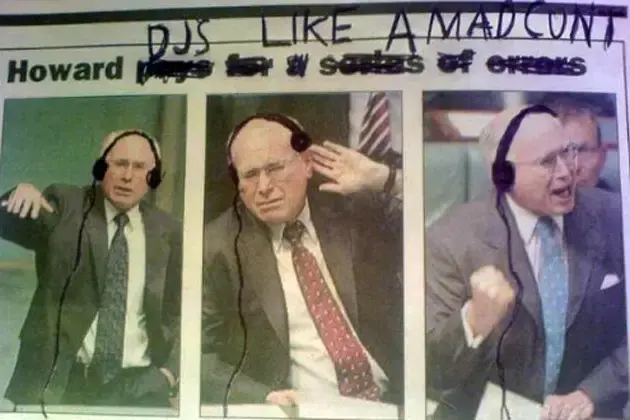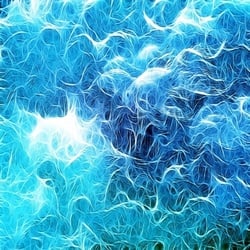The correct response to this is to ask them to move their bag and sit next to them, whilst there are other empty seats next to other people nearby.
Punish their greed.
The correct response to this is to ask them to move their bag and sit next to them, whilst there are other empty seats next to other people nearby.
Punish their greed.


I’m inclined to suggest some minor edits… “Either you voted yes or you’re unengaged and/or racist and/or have been manipulated by a brazenly racist no campaign.”


Ok, so I think the core concept you’re building from is that electrons are particles, thus can be placed in a jar like marbles for later use (or gas). However, this is an overly simplistic analogy, and although electrons can be ‘stored’, this presents some challenges. Matter isn’t a ‘physical barrier’ to electrons. You have an insulating container, you put and electron inside it, the electron can travel to the outside of it freely.
This concept is not as exotic as you might think, when you rub someone’s hair with a balloon, you pick up electrons on the balloon. Your balloon is a container of electrons, it’s statically charged. This isn’t just a fun party trick. Things like van der graph generators, and now pelletron particle accelerators use this ‘electron container’ concept to generate big voltages (typically millions of volts).
Capacitors store electrons in a non static way. You have two metal plates that don’t touch, on one side you have an excess of electrons and on the other side you have an excess of positive charge (absence if electrons). If you connect these to plates together they rush to meet.
Batteries are different again, they store electrons in ‘a chemical reaction’. I.e. you have two compounds that will react, but need to transfer electrons for that to occur. The only path for that transfer to occur is via the terminals of the battery.
Light always moves at the speed of light of it’s medium. Storing it requires to first address that challenge.


Can’t be solved, says only country in the world where it happens regularly.


My man out here rebranding “rubbing a balloon on your hair”
“Unfortunately, without access to one of their contracts, we can’t know for sure what power the broader group of creators actually has. It’s possible that the terms are so favorable for creators that their shadow equity is as good as actual ownership. It’s equally possible, however, that the system was set up in order to keep any meaningful power away from the creators.”
I guess this kind of mixes up some concepts when we ask is nebula really creator owned.
I see some positive in the fact that they offer ownership of the top holding company to big creators as an option. The most invested have the full protection. I can see reasons for having a two tierd system with phantom stocks, mostly in making adding new content creators easy.
But I guess the question really is, is nebula willing to share standard terms of their creator contract?


Well your first statement is a subtle strawman. Ross said this way is the only way, because no one else is trying, not that it was the right way.
Secondly, fallacy fallacy, just because it’s a false dichotomy doesn’t mean it’s not also correct. Can anyone just start up another initiative now? Not technically, but practically. Or would any serious attempt just join this movement to add to the momentum. Then if this fails, when can another attempt be made, how long till the ‘political will’ burnt by this campaign is regenerated?


It’s such a tired line. You know what everyone finds creepy, people who don’t respect your personal boundaries and don’t understand basic concepts of consent. Neither Money nor looks can make up for that in the slightest.


That’s sure is some verbose ignoring you’ve been doing.


I’d say if you are concerned, then the door is open to start a career in psychology research. But I think you’d struggle to move your emotions and pre-convinced notions out of your own way.
I can’t say I know what I’d do if I were in your situation. But many people throughout history have chosen to write those books, and they have suffered for that choice, but they have also driven change.


Care to explain your point with some detail?
If this fails, I doubt we’ll see a second proposal. So I think it would be fair to measure any arguments you make as why no action is better than the proposal.
Correct me if I am wrong, but this petition doesn’t decide the wording of any law just ensures it is brought to attention of EU lawmakers and discussed right?
Things change slowly then all at once.
Which is to say, the older generations are very set in their ways, but the new generations can be completely different.
You say you can write a book, maybe you should. Detail all the things you see and don’t like. Give me a voice to the people who think like you.
I see war memorials as a reminder of what we’re trying to avoid, not as a glorification.
No, I am not sure that I am.
Photonic processing, whilst very cool and super exciting, is not a quantum thing… Maxwells equations are exceedingly classical.
As for the rest it’s transistor design optimisation, enabled predominantly by materials science and ASMLs EUV tech I guess:), but still exploits the same underlying ‘quantum 1.0’ physics.
Spintronics (which could be what you mean by 2D) is for sure in-between (1.5?), leveraging spin for low energy compute.
Quantum 2.0 is systems exploiting entanglement and superposition - i.e. qubits in a QPU (and a few quantum sensing applications).
[radioactive decay triggered the poison gas?]
[Quantum hype train?]
[Imposter syndrome?]
Good question. It would be application specific. I think evanescencnt wave coupling in EM radiation is considered " very classical" (whatever that actually means). But utilizing wave particle duality for tunneling devices is past quantum 1.0 (1.5 maybe?). However, superconductivity tunneling in Josephson junctions in a SQUID is closer to quantum 1.0, but 2.0 if used to generate entangled states for superconducting qbits for quantum computing.
Clear as mud right?
Can we trade?
Oh my sweet summer child, a 100x yes, if only it were possible.
But more seriously, if you’re doing EE, the world of quantum is your oyster. Specialize in RF/MW design and implementation, we use it for qubit control, and you’ll be highly valuable.
Quantum Physics Postdoc here. Although technically correct this is also somewhat misleading. You need the band structure of solids, which is due to quantization and Pauli exclusion principle. The same quantum mechanics that explains why we did those strange electron energy levels for atoms in highschool. The majority of quantum mechanics, however, is not required: coherence, spin, entanglement, superposition. In the field we describe semiconductors as quantum 1.0, and devices that use entanglement and superposition (i.e. a quantum computer) as quantum 2.0, and smear everything else in-between. This
10 years ago I learnt that southern New Zealand slang uses bespoke or custom as an indicator of poor quality. Someone shittly welded a tow ball onto their car, that’s a ‘custom job’.
Your poorly assembled second hand IKEA bookshelf that’s falling apart and well fucked? A bespoke piece of furniture.
Those words have never bothered me since. Thanks kiwis.